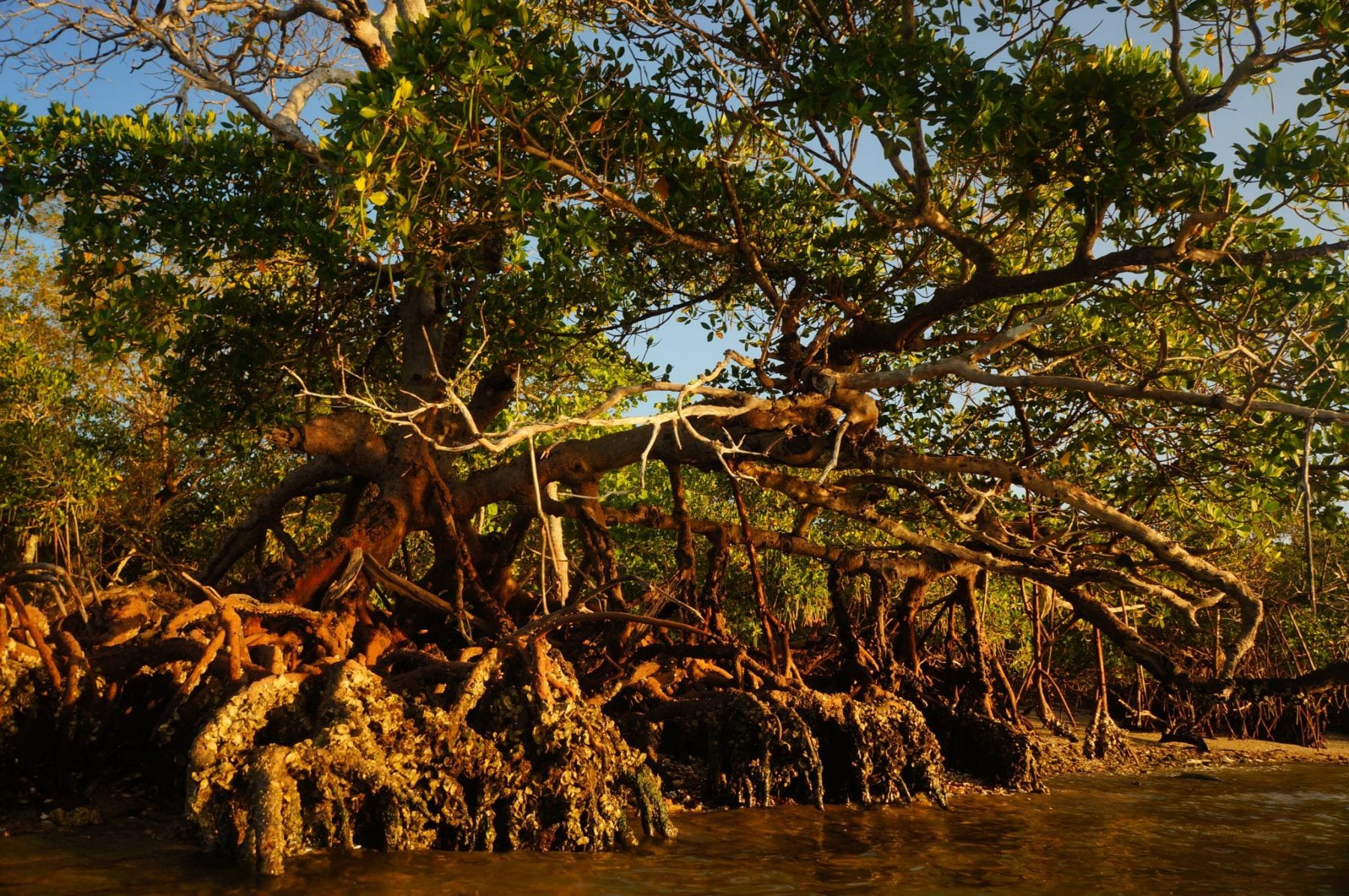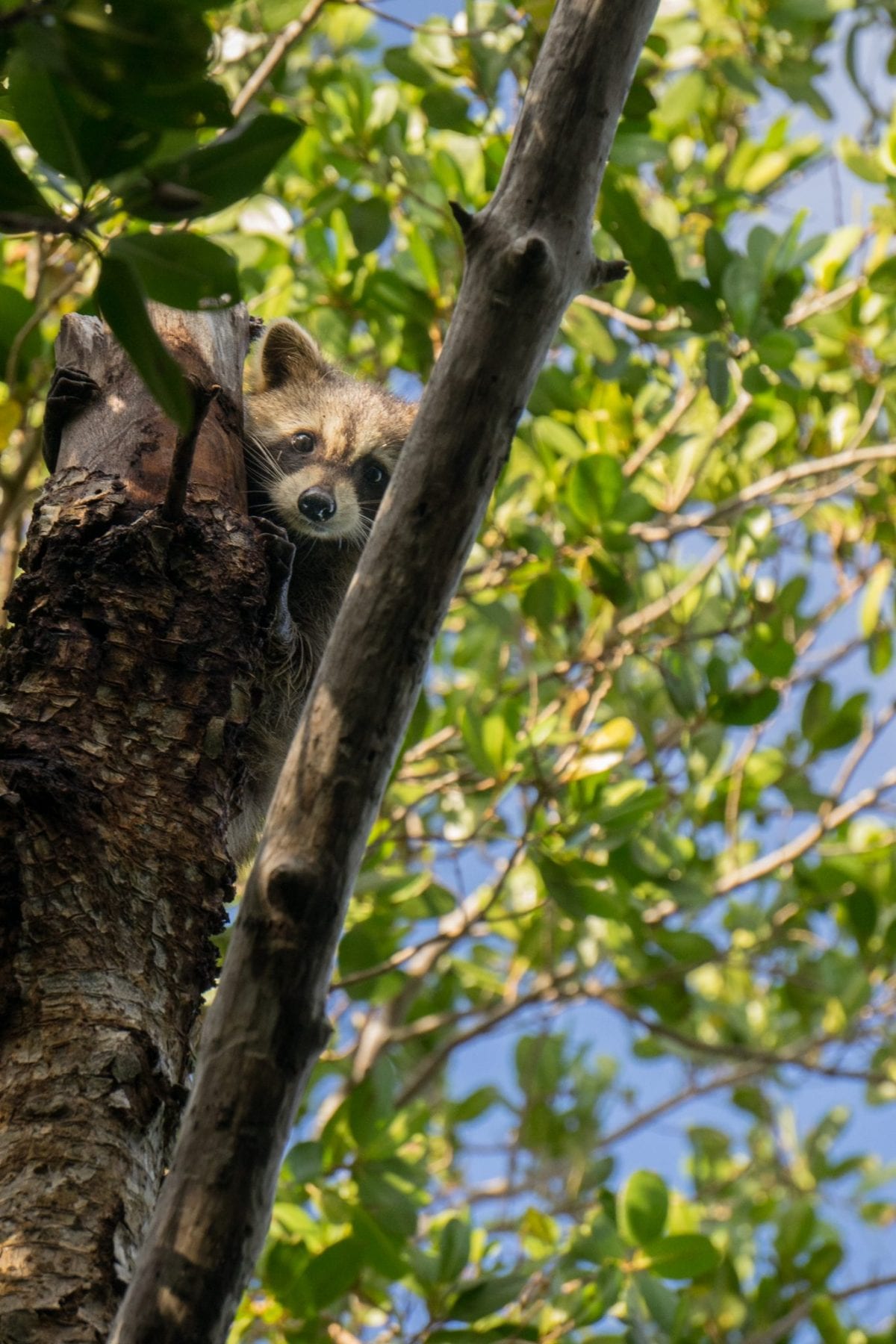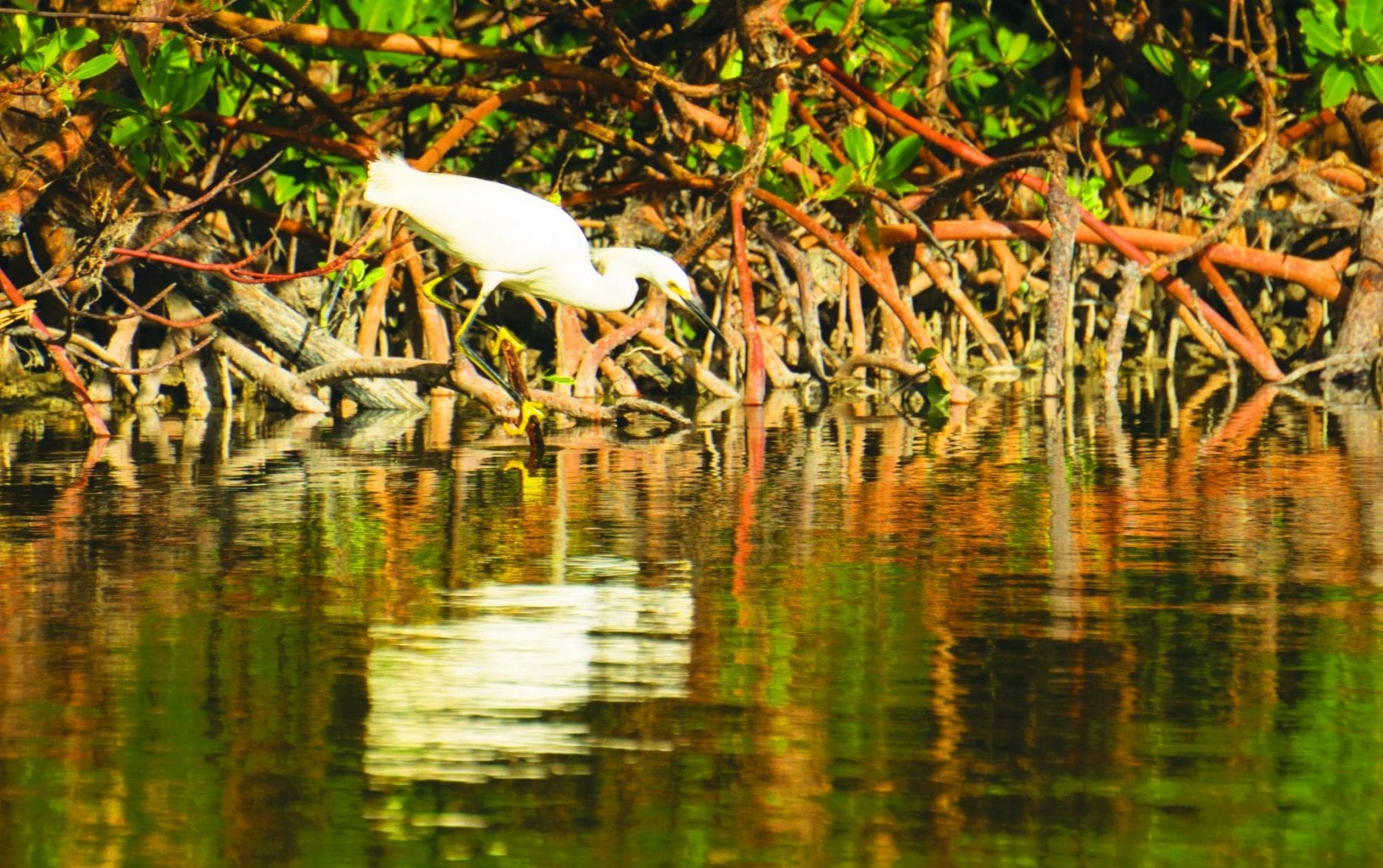by Leif Johnson
I pull, the mud pulls back. For a brief moment, we seem to reach an impasse with neither side willing to budge, but like an older brother, poised and ready to release when you’re at your most vulnerable, the mud swiftly releases its grip on my boot sending me headlong into a tangle of mangrove roots. Having grown up with an older brother whose main goal in life was to harass me, I feel like I should’ve seen that one coming and as I stagger to my feet the trees seem to sway with laughter, just as he would have. Read just about anything on mangrove forests and you’ll quickly learn how incredibly important these ecosystems are to all forms of life around them. However, it’s precisely the way they deliver this litany of benefits that can make them such a nightmare to walk through.
These forests are the ultimate test to your depth of field, troubling even the most nimble of us, and often times, while I myself stumble about; I entertain visions of James Bond attempting a “high speed” chase through there. The roots and branches of these red mangroves spread out at awkward angles, arcing through the air and bracing the trees like stilts and buttresses in the muddy ground. Sometimes referred to as “walking trees” these modified branches weave a dense mat that helps to stabilize the soil, aerate, and prop up the trees. Hence the name “prop roots”. Using these roots to prop myself up after my rough start to the day, I make my way over to our work site. Placing your foot down here is like placing a puzzle piece; you rotate it every which way before putting it down, searching for the best fit.
When finally I arrive at the site, the trees still sway in the wind, sunlight splintering through their canopies in disco ball fashion. The shimmering lace work of spider webs glint and wave on a breeze that carries the sound of distant Naples traffic. Bits of trash lie scattered about: grocery bags, water bottles, and sand castle implements, all wafted in on the tides. The patch of forest we’re standing in is one the few remaining stretches of a chain of mangrove bays that used to skirt this entire coastline. Over the years, as people flocked to the shores of southwest Florida, many of the bays were developed, their waters drained and mangroves ripped out. Though some may have been lucky enough to escape this fate, all of them have been altered with its boundaries now boxed in by condos and hotels.
Like lungs to a throat, the bays breathe in and out each day, slowly filling and emptying to the rhythm of the tides, life here hinging on a faraway moon. The Conservancy of Southwest Florida has been monitoring this system since 1999, making it one of the longest running mangrove studies in the state. Over the decades, with multiple monitoring plots scattered throughout, we’ve worked to gain an understanding of how the forest is faring. Our work is much like your annual physical at the doctors; only our patients are trees. Having worked to assess the health of these plots for nearly two decades, the trees are now old acquaintances and each year we return to check in on them. We measure how tall they are, how wide they are and check to see if there are any abnormal growths or discolorations occurring. Every tree and propagule (seedling mangroves) over 32 cm tall is tagged and measured within 6 meters of a center pole.



